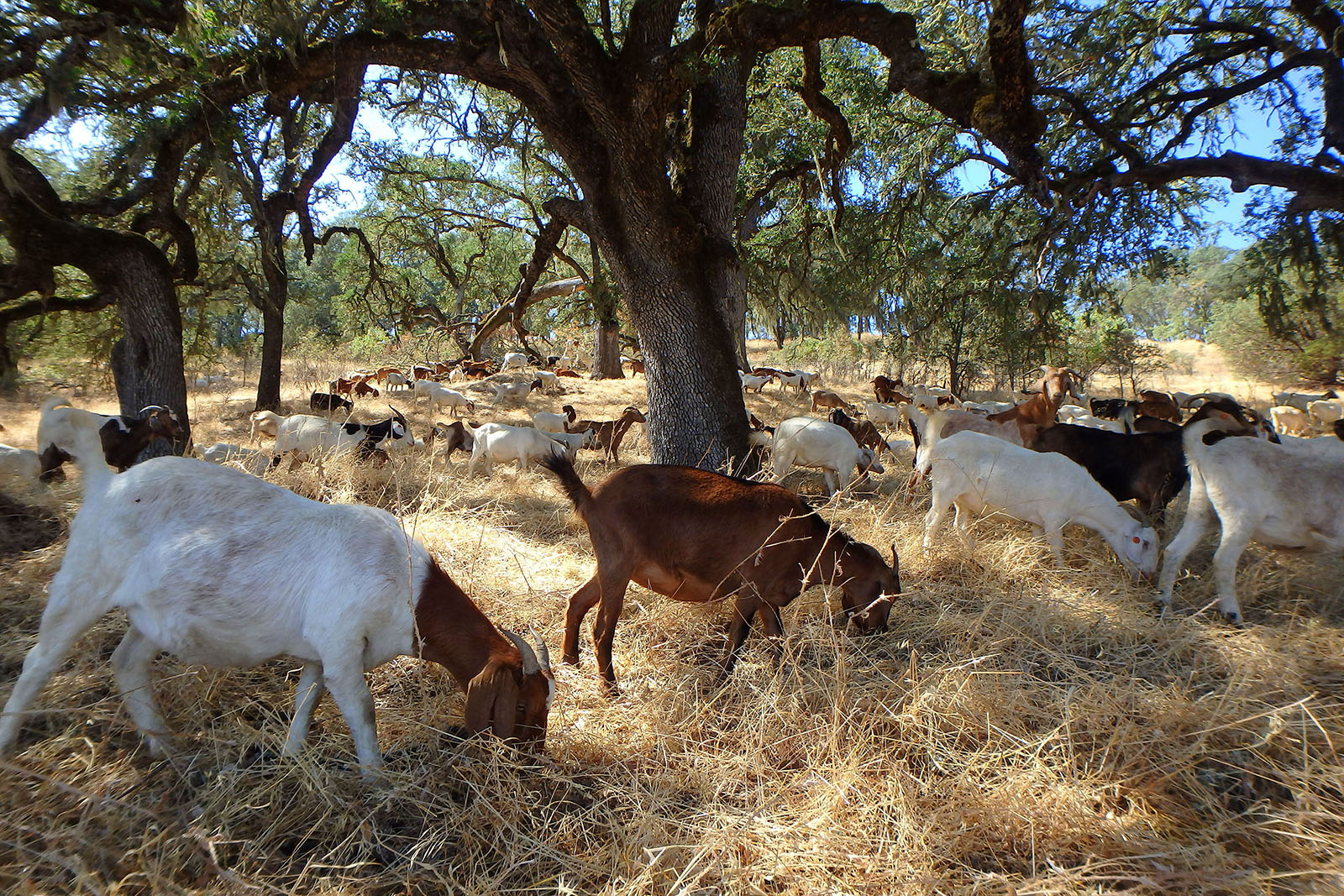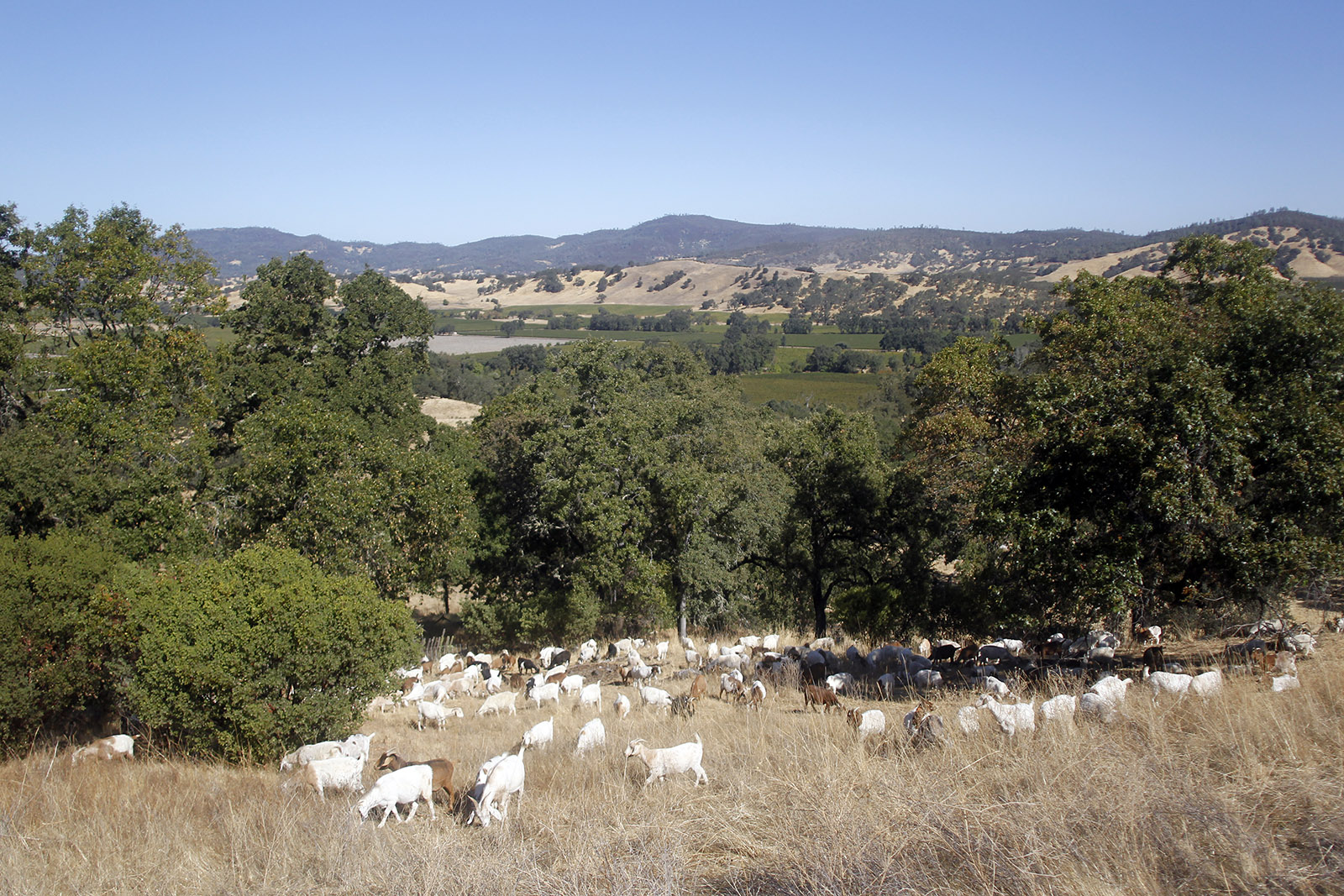Land Trust Uses Goats to Help Restore Protected Land
The Land Trust of Napa County began a new project on their Wantrup Preserve in Pope Valley. In September of 2017, 750 goats were enlisted to do a job that few are qualified to undertake – remove the heavy buildup of dry weed thatch during the height of the dry season. Thatch buildup – from many years growth of non-native species – inhibits the growth of native species, while also creating a significant fire hazard. But even in the dry season when the thatch is dry as can be, goats will eat it.
“Rather than bringing in livestock during the growing season to graze invasive plants,” said Stewardship Program Manager Mike Palladini, “through this experiment, we are trying to create the conditions that will allow remaining native species to become more competitive. The heavy buildup of thatch creates a physical barrier to the germination, growth and reproduction of native species that are already in the seed bank, in the soil. We just need to tip the balance in their favor.”
With the help of herders, dogs and portable fencing, the goats move across the property, eating and breaking up the thatch layer, until much of it is gone. “They are like a 750 goat team,” said herder Marcial Ucharima. “Once one of them moves to the next area, the rest will follow.”
The goats will also browse – eating vegetation in the lowest branches of trees, removing ladder fuels and further reducing fire hazards. And since they do not spend too long in any one area, they do not cause damage to the trees.
Every year, the Land Trust develops stewardship projects tailored to enhance the ecological health of each particular site’s natural resources. In some places, controlled burns have proven to be very effective. In others, volunteer efforts or mechanical approaches like mowing can be effective. In this large hilly oak woodland, with extensive challenges created by widespread invasive species, research pointed to targeted grazing as a promising technique.
“We will be closely evaluating the effects of this grazing,” said Palladini. “This is an experiment, so we’ll need to carefully measure the impacts – assessing the differences between grazed and ungrazed monitoring plots in order to measure the response of both native and invasive species. We’ll have to stick with this experiment for some time in order to get reliable data.” But initial results have been very positive. In areas where the goats have grazed, the weed thatch is nearly all gone.



